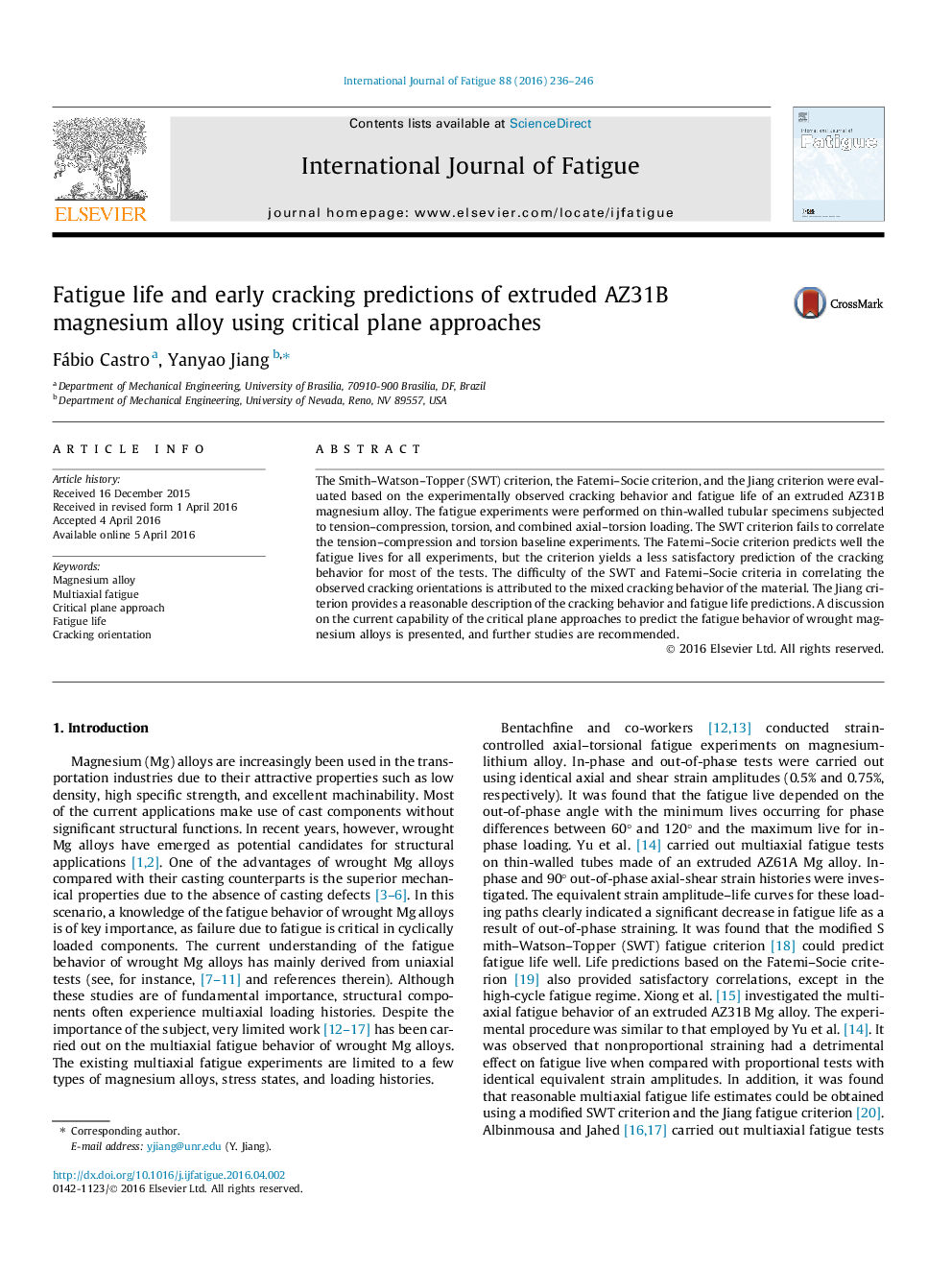| Article ID | Journal | Published Year | Pages | File Type |
|---|---|---|---|---|
| 777538 | International Journal of Fatigue | 2016 | 11 Pages |
•Multiaxial fatigue experiments of AZ31B magnesium alloy.•Observations of fatigue lives and early cracking behavior.•Assessment of critical plane multiaxial fatigue models.
The Smith–Watson–Topper (SWT) criterion, the Fatemi–Socie criterion, and the Jiang criterion were evaluated based on the experimentally observed cracking behavior and fatigue life of an extruded AZ31B magnesium alloy. The fatigue experiments were performed on thin-walled tubular specimens subjected to tension–compression, torsion, and combined axial–torsion loading. The SWT criterion fails to correlate the tension–compression and torsion baseline experiments. The Fatemi–Socie criterion predicts well the fatigue lives for all experiments, but the criterion yields a less satisfactory prediction of the cracking behavior for most of the tests. The difficulty of the SWT and Fatemi–Socie criteria in correlating the observed cracking orientations is attributed to the mixed cracking behavior of the material. The Jiang criterion provides a reasonable description of the cracking behavior and fatigue life predictions. A discussion on the current capability of the critical plane approaches to predict the fatigue behavior of wrought magnesium alloys is presented, and further studies are recommended.
